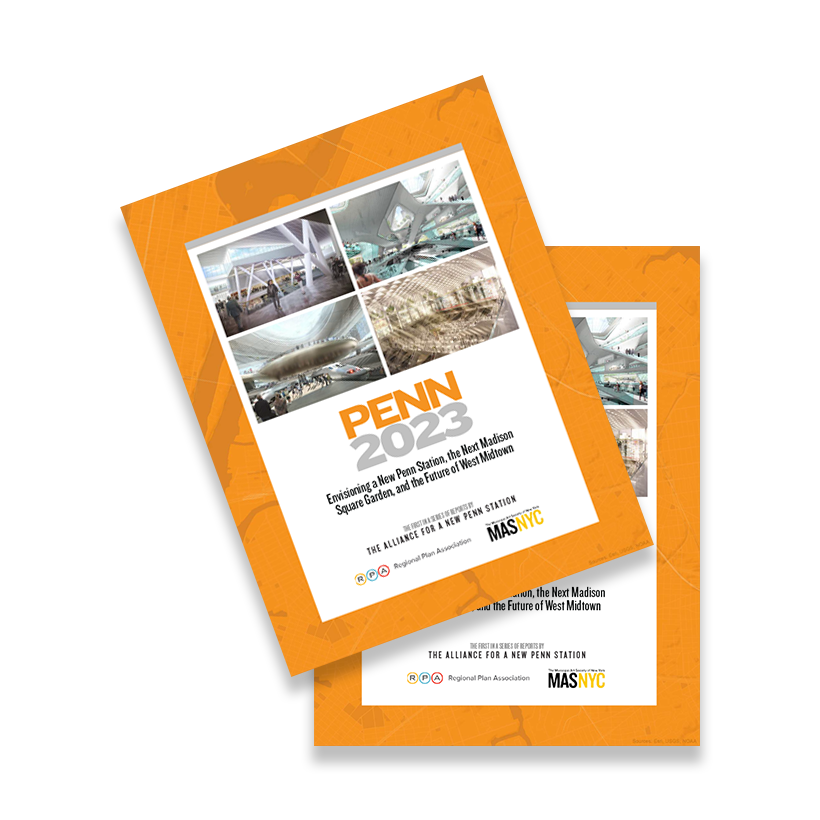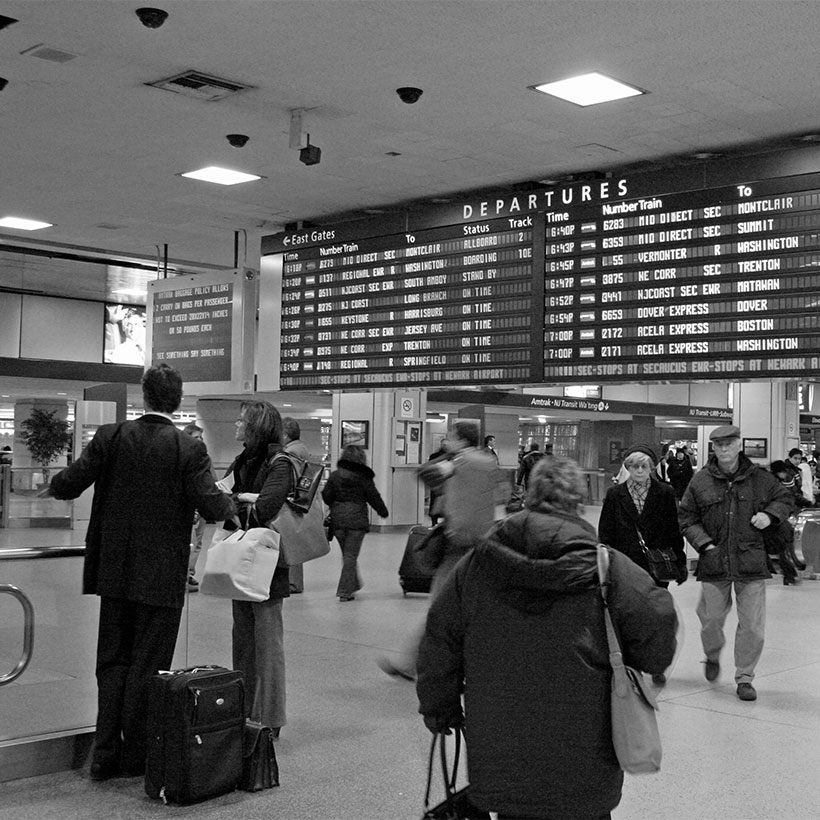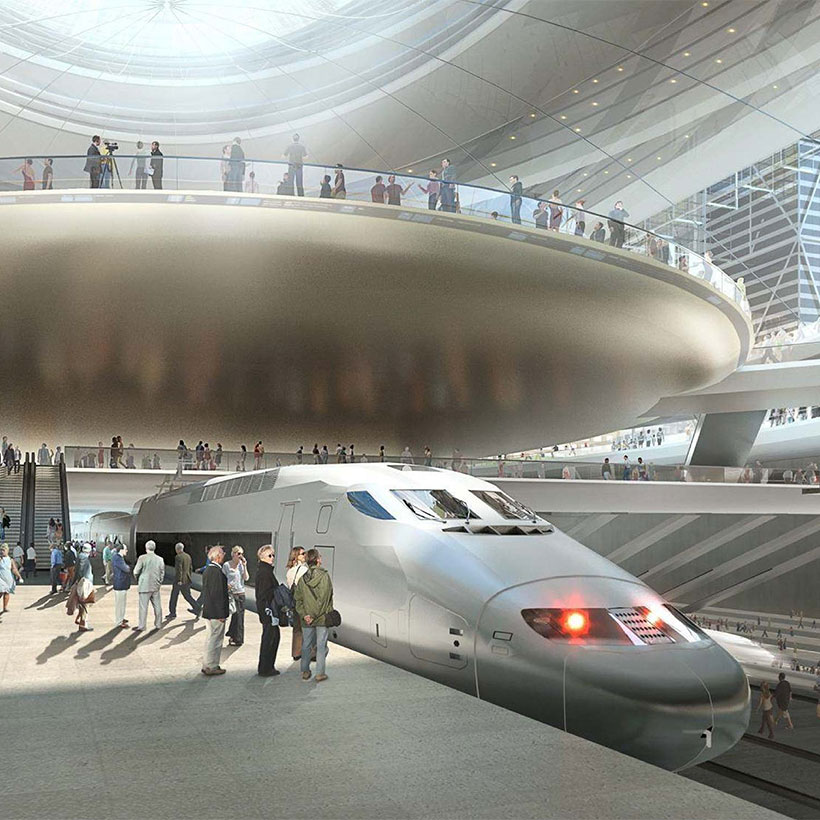Public for Penn Station Campaign Launches
Clock is Ticking to Make Drastically Needed Improvements at Penn Station
Public for Penn Station, a new commuter advocacy campaign, launched today to demand a comprehensive, long-term plan to finally fix Penn Station. With construction underway on Moynihan Train Hall and East Side Access and the expiration of the operating permit for Madison Square Garden in 2023, there’s a once-in-a-generation opportunity to fix the many problems plaguing commuters at Penn Station while ridership is temporarily lower than it is today.
Penn Station was designed to serve 200,000 passengers. Today over 650,000 passengers use the station daily, drastically exceeding its capacity, leading to dangerous conditions including mass overcrowding. Low ceilings, poor wayfinding and jam-packed entry and exit ways make Penn Station difficult to traverse and present serious egress obstacles in the event of an emergency.
“Penn Station is at a breaking point, a crisis that didn’t happen overnight but was created out of generations of neglect,” said Elizabeth Goldstein, President, the Municipal Art Society of New York. “Our leaders must grapple with the complex, long-term planning required to truly rebuild and deliver the new Penn Station that our city deserves. With five years left on Madison Square Garden’s operating permit, the time to act is now.”
Download Press Release
Meaghan Baron
mbaron@mas.org
(212) 935-3960
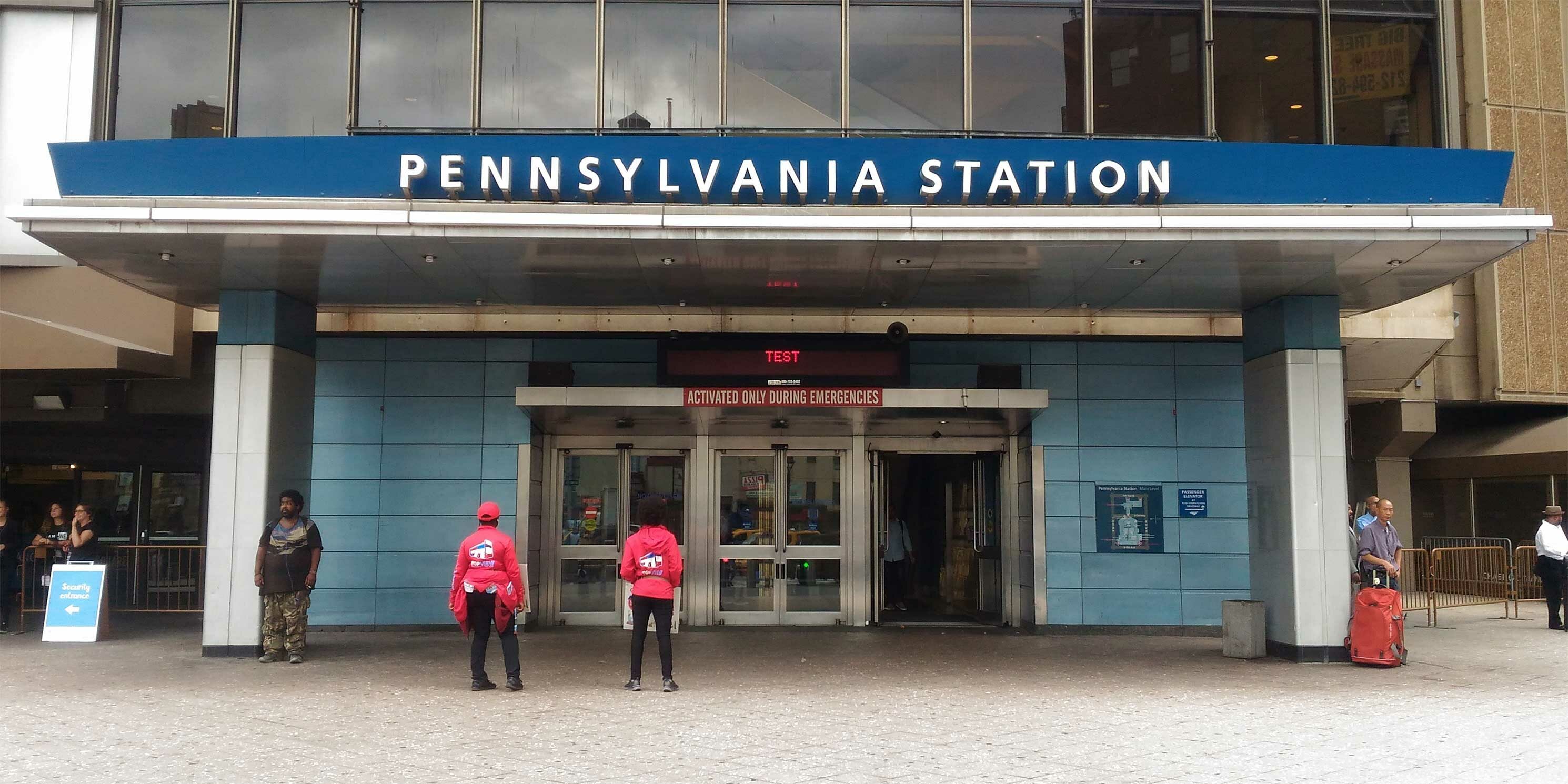
THERE ARE COST-EFFECTIVE, FEASIBLE IDEAS THAT WOULD DRASTICALLY IMPROVE THE EXPERIENCE FOR COMMUTERS.
Many ideas have been proposed by transit advocates, government entities, architects, planners, designers and others that would completely reshape Penn Station. There are several key elements that these proposals all share, including eventually moving Madison Square Garden to a new location. This would allow for opening up the facility to more natural light and air. All of the proposals also dramatically improve the passenger experience, wayfinding and safety. They vastly expand the size and number of entry and exit ways that will make it easier for passengers to exit in the direction closest to their final destination. Improved entry and exit ways also will enable the creation of more ADA-accessible points of egress.
To ensure that Penn Station becomes an efficient and gracious entry point to New York City, a broad and ambitious plan for the entire complex must be created. This planning needs to begin now, as Amtrak moves to the Farley Post Office building in 2020. This is just the first of several important steps in coming years that create a new opportunity for finally making Penn Station the world-class facility our City and region deserve.
A ONCE IN A GENERATION OPPORTUNITY
Several upcoming milestones make the timing right to finally address the mess at Penn Station. The opening of Moynihan Train Hall (2020) and the completion of East Side Access (2022) will both temporarily reduce the number of passengers moving through Penn Station, as Amtrak riders will disembark through Moynihan and some LIRR riders will travel to Grand Central instead of Penn. RPA estimates that ridership through Penn Station will temporarily dip by 150,000 once these two projects are complete. The dip in ridership provides a window to make significant improvements to Penn Station, with potentially lower costs and less impact on riders.
The expiration of the operating permit for Madison Square Garden in 2023 creates another important milestone and an opportunity to relocate the Garden, which would allow for the creation of a truly world-class transit hub at Penn Station. Elected leaders gave MSG a ten-year permit extension in 2013; now there are five years left for leaders to create feasible plans for moving the Garden to a new home, which would allow for dramatic improvements to Penn Station.
This is a short window of opportunity as commuter transit ridership will continue to grow in the decades ahead. The eventual completion of the Gateway Project will also bring two new cross-Hudson tunnels into Manhattan, expanding capacity further and bringing more passengers into Penn Station. RPA estimates that an additional 150,000 commuters from west of the Hudson River will need to be accommodated by 2040, while Metro North plans to connect directly to Penn Station and Amtrak also forecasts increased ridership in coming decades. We need a Penn Station that can handle all these additional trips.
To meet these opportunities in this short window of time, there must be a comprehensive plan for the station and its surrounding neighborhood.
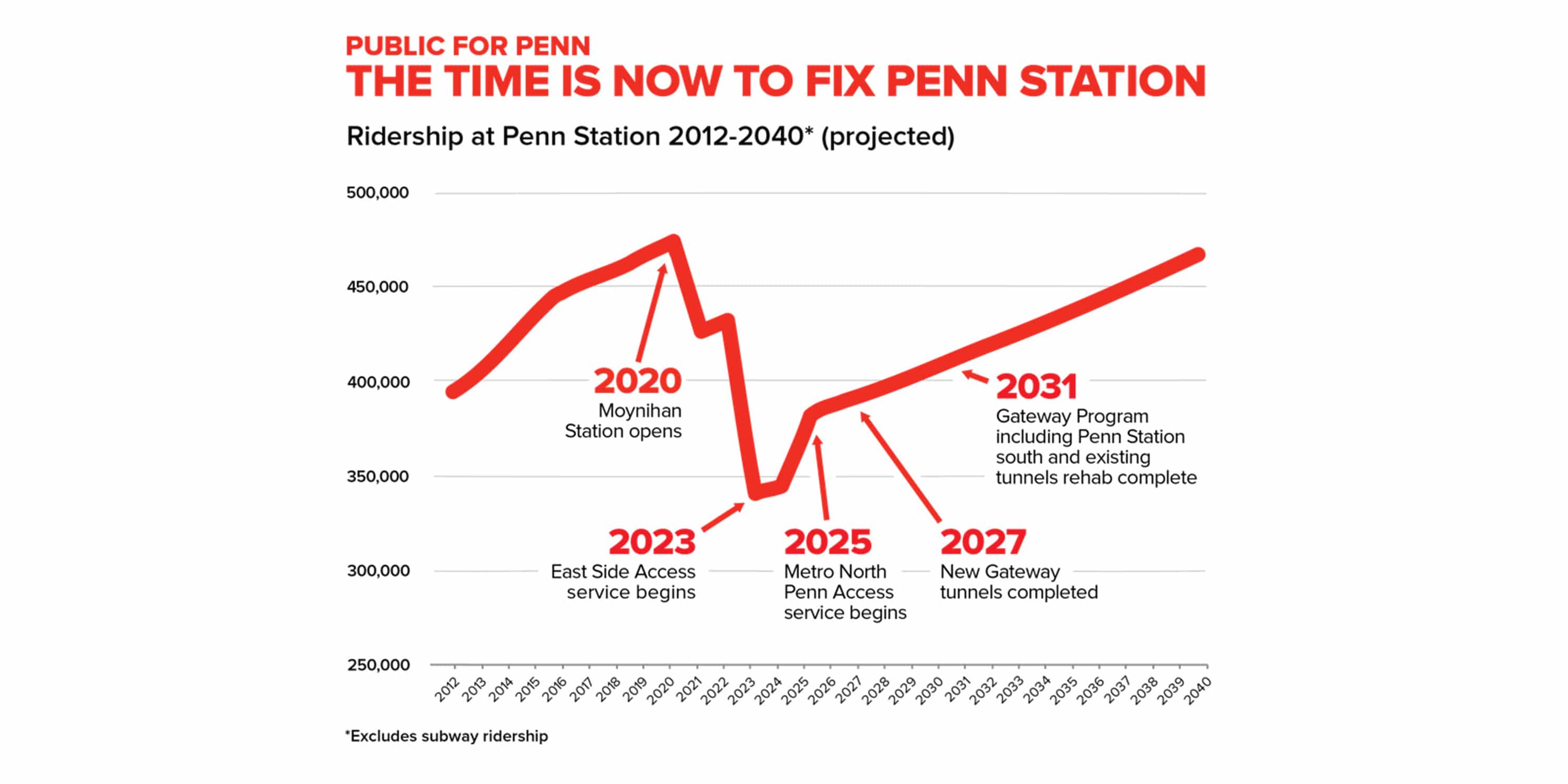
PUBLIC FOR PENN STATION IS ASKING OUR LEADERS FOR ACTION.
Leading transit and civic advocates including Regional Plan Association, the Municipal Art Society of New York, Riders Alliance, Tri-State Transportation Campaign, the Design Trust for Public Space and Transportation Alternatives have joined the Public for Penn Station campaign. This campaign also has the support of key community leaders and elected officials.
By combining grassroots knowledge with transit and planning expertise, Public for Penn Station demands that our leaders finally address this public safety issue before it’s too late. This campaign will ensure that commuters’ knowledge and first-hand experiences at Penn Station are shared in a way that leads to real action. WE NEED YOUR VOICE. Visit Public for Penn Station’s online organizing hub to learn more: www.publicforpenn.org.
“For far too long, the greatest city in the world has been saddled with one of its worst major transit complexes in the form of Penn Station,” said Manhattan Borough President Gale A. Brewer. “It’s time to chart real, concrete solutions to provide midtown Manhattan with the new hub we need and finally lay a foundation for this region’s rail transit network and economy that will be sound for decades to come.”
“Commuters have suffered through deteriorating transit infrastructure for too long,” said Nick Sifuentes, executive director, Tri-State Transportation Campaign. “Penn Station presents very troubling safety challenges that we don’t see anywhere else across our system. It’s time to finally address these issues once and for all.”
“Doing nothing on Penn Station cannot be an option, ridership has the potential to increase by as much as 150,000 people by the year 2040,” said Tom Wright, President, Regional Plan Association. “We want these commuters on trains, and not adding to the congestion on City streets. But if we don’t prepare Penn, delays, emergency incidents and dangerous overcrowding will only get worse, putting human lives and our region’s entire economy in serious jeopardy.”
“The situation at Penn Station is dire, which bottlenecks hundreds of thousands of commuters every day,” said John Raskin, executive director, Riders Alliance. “Unlike our subway network, which spans across four boroughs, Penn Station is a centralized location that we have the know-how to fix today.”
“We need a real, comprehensive plan for Penn Station and the surrounding streets to address the serious safety issues at this critical transit center,” said Marco Conner, Deputy Director, Transportation Alternatives. “The clock is ticking which is why we are launching this campaign to hold our leaders accountable.”
“Our public spaces are a reflection of our values and today Penn Station is a poor reflection of the welcome we want to give to the hundreds of thousands of people who use it daily,” said Susan Chin, executive director, Design Trust for Public Space. “We need our leaders in concert with local stakeholders to build on what has been years of good ideas and turn them into action now.”
“The transformation of Penn Station has the potential to anchor an entire neighborhood renaissance, from a place all of us race through to an inviting space for New Yorkers and visitors alike,” said David Sandler, chair of Manhattan Community Board 5 Transportation and Environment Committee. “With the impending opening of Moynihan Station and East Side Access, now is the time to plan for this transformation and finally make it reality.”
“More people enter Penn Station on a daily basis than the entire population of Portland, Oregon, and Las Vegas. While it’s the nation’s busiest train hall, it’s also crucial that we get a plan for Penn Station that takes into consideration the local neighborhoods and businesses which I represent. I’m grateful to the Regional Plan Association for launching this important commuter advocacy campaign,” said State Senator Brad Hoylman.
Download Press Release
